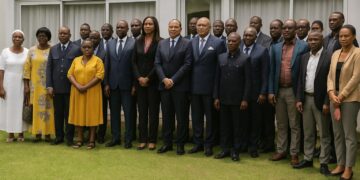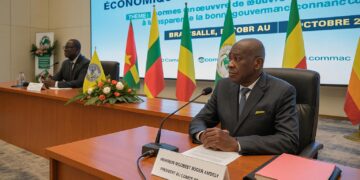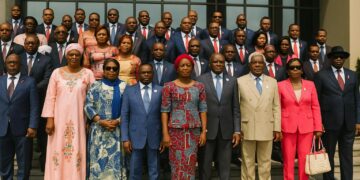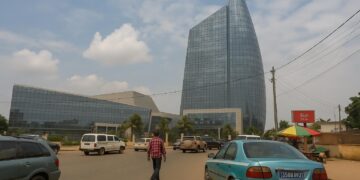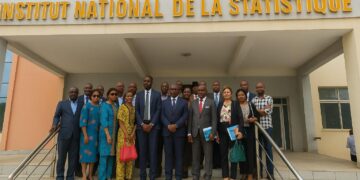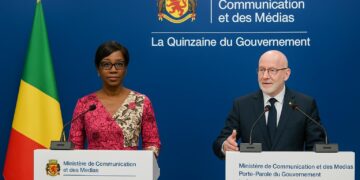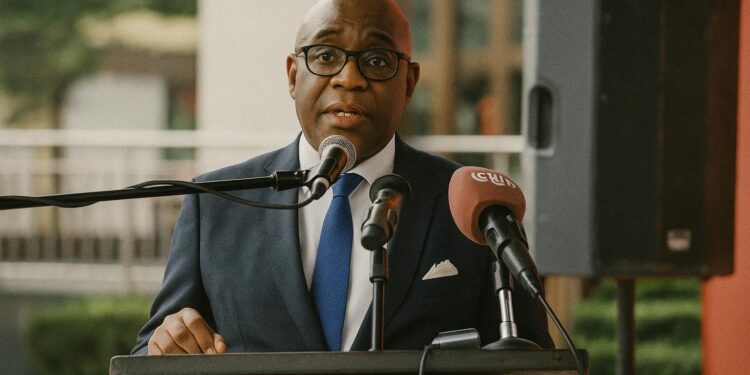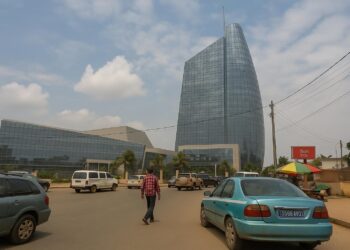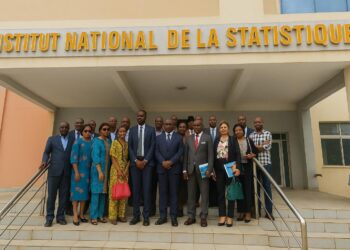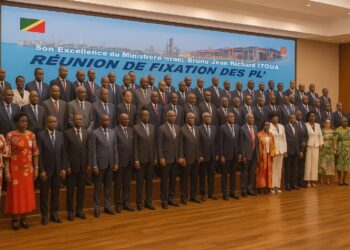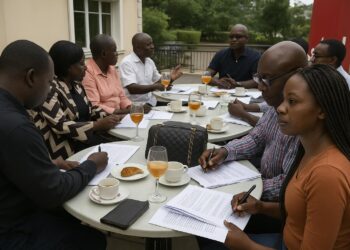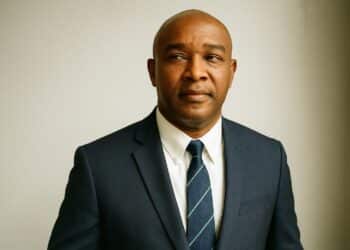Diplomacy Cast in Concrete and Copper Wires
When the first marble tiles were laid for BSCA Bank’s headquarters in 2015, the structure was already heralded as more than a glass-and-concrete addition to downtown Brazzaville. It was the institutional expression of a pledge made two years earlier during President Xi Jinping’s state visit, when President Denis Sassou Nguesso advocated for a banking vehicle that could translate political goodwill into capital flows. Ten years on, the venture stands as a tangible instrument of Beijing’s Belt and Road vision in Central Africa while simultaneously answering Brazzaville’s quest for diversified financing, a point frequently underscored by the Congolese Ministry of Finance and echoed in remarks by the Chinese embassy.
From Memorandum to Market Leadership
The mixed shareholding—anchored by the Agricultural Bank of China and Congolese public funds—allowed BSCA Bank to clear regulatory hurdles at the Bank of Central African States with unusual speed. Once operational, the institution expanded from a single branch in 2015 to seven outlets by mid-2025. According to the latest prudential data released by BEAC and corroborated by the Congolese Banking Association, the newcomer captured more than one-fifth of national deposits and nearly fifteen per cent of credit to the private sector. Such progress places BSCA ahead of longer-established competitors, a performance that Minister of Finance Christian Yoka attributes to its “hybrid governance culture” that pairs Chinese risk-assessment algorithms with Congolese market intuition.
Metrics behind the Development Narrative
While headline figures impress, their qualitative meaning warrants careful parsing. World Bank surveys show that only about eighteen per cent of Congolese adults hold a formal bank account, a ratio roughly on par with the Central African Economic and Monetary Community average. BSCA’s retail strategy, focused on digital wallets and simplified KYC procedures, has nudged that needle upward by an estimated two percentage points since 2020, modest yet statistically significant in BEAC’s Financial Inclusion Review. On the corporate front, a portfolio weighted toward construction and telecom projects aligns with priority sectors identified in the National Development Plan 2022-2026. At the same time, the bank’s exposure to sovereign paper—over eighteen per cent of outstanding state financing—speaks to a dual mandate: supporting treasury needs without crowding out private borrowers, a balance repeatedly praised by IMF staff in their Article IV consultations.
Charting the 2026-2030 Quinquennial
Announced during the anniversary ceremony, the forthcoming third five-year plan envisages deepening regional presence across the Congo River Basin and rolling out renminbi-denominated trade services. Senior executives underline three pillars: digitisation, green finance, and support to small and medium enterprises. The digital ambition dovetails with Congo’s National Broadband Plan, while the green window seeks to syndicate funds for hydropower and climate-smart agriculture, avenues already piloted with the African Development Bank. Analysts at Fitch Solutions caution, however, that currency volatility and sovereign debt dynamics could test capital adequacy ratios. In response, Director General Wang Zhiheng emphasises a “calibrated growth trajectory that respects BEAC prudential limits and Basel III buffers.”
Geopolitical Ripples beyond the Balance Sheet
BSCA Bank’s trajectory resonates far beyond Congolese macro-indicators. For Beijing, the institution exemplifies a shift from resource-backed loans toward equity stakes and service-sector engagement, a pattern also visible in Ethiopia and Egypt, as noted by the China-Africa Research Initiative at Johns Hopkins University. For Brazzaville, the presence of Chinese capital in a regulated arena has helped normalise bilateral economic relations, diversifying a partnership often portrayed through the prism of infrastructure megaprojects. Diplomats stationed in the sub-region observe that Kinshasa, Libreville, and Yaoundé monitor the model closely, contemplating similar joint-venture banks to lubricate trade corridors envisioned under the African Continental Free Trade Area. Such spill-over potential lends the BSCA experience an influence disproportionate to its balance sheet size.
A Measured Outlook for the Next Decade
As the bank lights its tenth candle, sober optimism prevails among policymakers. The institution has delivered liquidity, modern payment rails, and symbolic proof that Sino-African cooperation can inhabit the disciplined realm of banking supervision. Yet the path ahead will require vigilance against credit-concentration risks and alignment with evolving anti-money-laundering norms. Officials close to Prime Minister Anatole Collinet Makosso argue that the robustness of the public-private partnership will prove decisive, insisting that continuous Congolese ownership guarantees local relevance. If the third quinquennial plan succeeds, BSCA Bank may well transition from emblematic experiment to mature cornerstone of Central African finance, reinforcing the diplomatic edifice that first gave it life in 2013.






